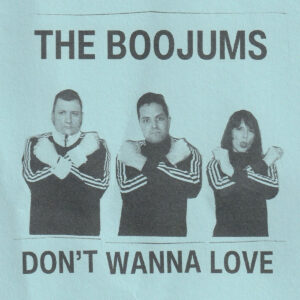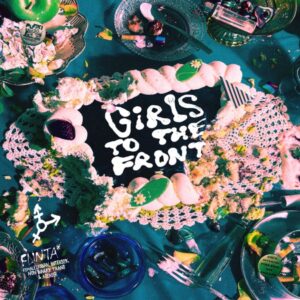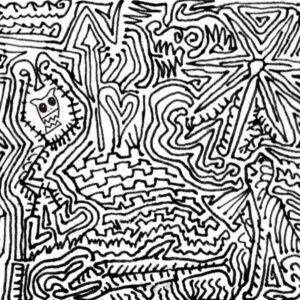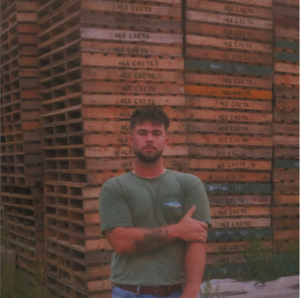I’m not sure where I first heard Prom Vagabonds, but their song Alligator caught my ear and led me to their single “Cali Girls 2”, which I featured as a standout track on that week’s Friday Setlist post. That song was featured on a compilation called Girls to the Front, a collection of 13 songs by Dutch FLINTA*-fronted acts from punk and punk-ish genres. Astute readers of turn & work will know that there’s a strong #dutchindie presence on here, and this is a perfect fit.
“Girls to the Front” isn’t just a catchy phrase-it’s a rallying cry that traces back to the early 1990s riot grrrl movement. Bands like Bikini Kill would literally call out “girls to the front!” from the stage, carving out space for women and gender-diverse fans to take up physical and creative space in a scene that too often pushed them to the margins.
(Aside: If, like me, you’re not familiar with the term, FLINTA* is term that has gained prominence in Europe recently. It’s an umbrella for women, lesbians, intersex, non-binary, trans, and agender people-basically, anyone who isn’t a cis man. The asterisk is there to make sure no one gets left out.)
Girls to the Front is just that: a snapshot of the Netherlands’ current wave of punk and punk-adjacent acts, all fronted by FLINTA* musicians. It was put together by of Bibi Fay Bannink with support from Plato Utrecht Records. The compilation was released on International Women’s Day (March 8) 2025, and it’s a fast and furious set: thirteen tracks, 35 minutes, zero filler. Most punk fans will find something to like here — from the scrappy garage punk of Prom Vagabonds to the weird storytelling from Limerent’s “Business Class”, to the moody, grungy post-punk of Ioana Iorgu, whose song “Doll House” was featured as a standout on the Setlist as well:
There are so many great songs here from every subgenre of hard music: from the incendiary hardcore of Waterschade to the Lambrini Girls-style scathing feminism of C’est Qui (“Filthy Hands”) and the freaky electro of Kate Oren’s “Madrid”, the record is a unified statement that hard music is not the domain of cis men. There’s an urgency and vitality to these songs that makes them cohesive, despite the variance in style. Even when a track isn’t quite my thing, it still feels essential in the context of the record-each song is a piece of a bigger statement about who gets to make noise, and why it matters.
It’s that sense of purpose and community that makes Girls to the Front more than just a compilation. Last week I compared the True Names benefit compilation to a 90s Matador Records sampler. Girls to the Front evoked a similar feeling, but for the Epitaph or Hellcat Records samplers that I played to death as a teenager. It’s raw, angry, and irresistible. Expect to see a half dozen of these #dutchindie bands featured here in the coming months.
Further Reading
Press release (in Dutch)












